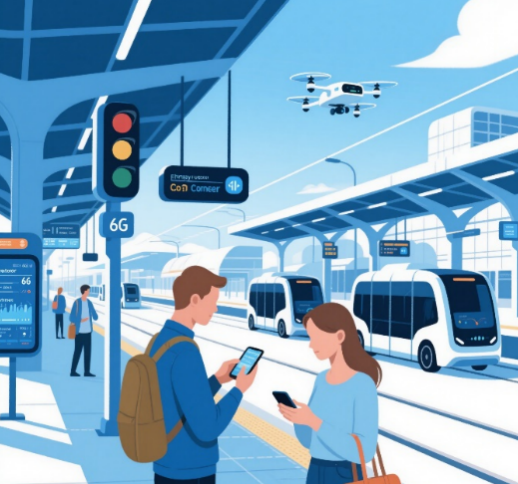
In an era where digital experiences demand millisecond precision, edge computing—paired with 6G’s revolutionary speed—is birthing the "instant internet." This synergy moves data processing closer to users, slashing latency and unlocking applications once deemed impossible. Let’s explore how industry leaders and the EU are driving this shift, and the transformative use cases emerging from their efforts.
Decentralized Processing: NVIDIA’s Edge AI Revolution
Traditional cloud computing’s reliance on distant servers creates delays fatal to real-time applications. NVIDIA’s EGX edge AI platforms solve this by embedding high-performance computing at the network’s edge. These compact systems run complex AI models locally, enabling instant decision-making. For example, in automotive manufacturing, EGX-powered cameras analyze assembly lines in real time, detecting defects 30% faster than cloud-based systems. This localized intelligence turns factories into adaptive ecosystems where machines optimize processes autonomously, reducing downtime and waste in industries from logistics to renewable energy.
6G mmWave: The Catalyst for Ultra-Responsive Networks
Verizon’s 6G mmWave trials in New York City showcase the next connectivity leap. Using 24–100 GHz frequencies, the trials achieved 10 Gbps speeds with just 1ms latency—10x faster than 5G. Such precision is transformative for autonomous drones, which require instantaneous data to navigate urban skies. During a trial, a drone adjusted its flight path in under 2ms after receiving real-time obstacle data from city sensors—a feat impossible with legacy networks. Beyond drones, 6G’s low latency powers applications like AR-assisted collaboration, where designers in Berlin and Paris can tweak 3D models simultaneously in shared virtual spaces, as if working side-by-side.

The EU’s €6 Billion Bet on Edge Sovereignty
The European Union is investing €6 billion via Horizon Europe to build a resilient edge ecosystem, deploying 20,000 edge nodes across Europe by 2025. The goal: a decentralized infrastructure prioritizing security, efficiency, and industrial innovation. German automakers like BMW already use EU-funded edge systems to refine electric vehicle production: local servers process data from robotic arms in real time, cutting welding errors by 40%. In healthcare, Spanish surgeons rely on this network for AR surgeries, receiving latency-free 3D organ scans from French hospitals overlaid with AI treatment suggestions—all while keeping sensitive patient data within regional networks, addressing privacy and sovereignty concerns.
Redefining Industries Through Instant Interaction
The fusion of edge computing and 6G is rewriting industry playbooks:
Smart Factories gain "self-healing" capabilities, with machines adjusting workflows in real time to minimize energy use and downtime. Bosch facilities using edge nodes reduced energy waste by 25% as systems optimized power consumption dynamically. Healthcare sees precision surge, as AR surgeries guided by instant data overlays boost procedural accuracy by 20%, according to EU trials. Aviation and Logistics adopt autonomous drones that navigate complex environments safely, enabled by near-instant data exchange between vehicles, infrastructure, and clouds.

Balancing Ambition and Practicality
Challenges like interoperability between edge nodes and energy efficiency remain, but progress is relentless. The "instant internet" represents more than speed; it’s a paradigm where technology reacts as intuitively as humans—enabling factories that learn, surgeries that adapt, and cities that anticipate needs. As NVIDIA, Verizon, and the EU lead this charge, they’re not just upgrading networks—they’re building a world where digital and physical realities merge seamlessly, driven by the power of proximity and precision. The era of instant, intelligent connectivity is here, promising a future where innovation is not limited by latency but unleashed by it.



